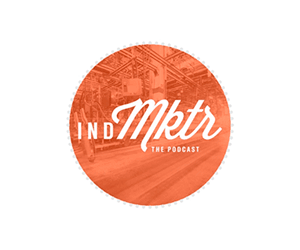The B2B buying process usually involves multiple stages over long time periods. In fact, there are purchases that can take a year or more.
Unlike B2C buying, business-to-business buying isn’t generally a single-person process. A team of people analyze the potential purchase, and in some cases, a top-level person will be the one to call the final shot.
B2B buying decisions tend to be more complex and information-intensive than consumer buying decisions. It’s highly unlikely that a B2B buyer will make a final purchasing decision based solely on the information featured in an ad. Instead, they follow a formal process that leads to the ultimate purchasing decision.
In this article, we’ll cover the different stages business buyers go through before they ultimately make a purchase, as well as the factors that influence their decisions.
The 5 Stages of the B2B Buying Process
Gartner, the world’s leading research and advisory company, explains that the decision-making stages of the B2B buying process are best viewed as discrete tasks. They are not necessarily performed sequentially, as buyers may find themselves revisiting each task multiple times throughout the process.
1. Recognizing the Problem or Need
The buying process starts as soon as you identify a need or problem that can be solved by acquiring a product or service. Problem recognition is often triggered by external or internal stimuli.
External stimuli can be in the form of an advert, a new competitor, a sales presentation, or some information from a trade show.
On the other hand, any organizational problem or need that arises through internal operations or the actions of employees and managers are good examples of internal stimuli.
2. Assessing and Comparing Available Solutions
Once a problem or need has been recognized, B2B buyers look for ways to address it.
They should first decide whether to buy the solution from a third-party or to establish it in-house. Then, select their preferred type of solution.
For instance, if a buyer decides to opt for a third-party solution, they typically explore different product categories to determine which products or services may be in or out of scope and to weigh the pros and cons of each potential route. This step is a vital part of the buying journey.
3. Specifying What They’re Looking for
Next, they buyer defines the requirements for the product or service they need by answering questions such as the following:
- How will they benefit from the product or service?
- How much should it cost?
- What are the company-specific requirements?
It’s also worth noting that formal purchasing decisions require a purchasing manager or senior decision maker to approve the final product specification.
4. Choosing a Supplier
This is the part where buyers gather as much information as possible on potential vendors.
Keep in mind that each B2B buyer selects their suppliers using an approach that is specific to their organization. Some follow an informal procedure where they evaluate and compare suppliers in a less structured way, such as:
- Soliciting proposals from known vendors
- Looking in trade directories and company files
- Examining websites, trade publications, and catalogs
- Reaching out to suppliers for information
Other companies have lengthy, formal B2B buying processes that involve RFPs, committees, shortlists, and longlists. They conduct either of these two analyses:
- Vendor analysis: a systematic evaluation of vendors which focuses on quality, price, delivery service, overall reliability, and availability
- Value analysis: a formal evaluation of each component of a potential purchase which examines quality, materials, design, and item reduction to save costs
5. Justifying the Decision
Once the core decision making unit has come to a decision, they need to justify it. They ask vendors for references or get the support of senior management by delivering a presentation.
4 Essential Factors That Influence B2B Buying Decisions
There are four main factors that influence B2B buyers as they move toward a purchasing decision. Here’s a detailed rundown:
1. Organizational Factors
Business goals and objectives obviously play a significant role in the B2B buying process. In most cases, the decision makers are required to present a compelling explanation as to how the new purchase will help the company achieve their goals and mission.
If a buyer is aiming to sell quality product, then they’ll really need an exceptional supplier. If they plan on selling cheaper goods, however, they’ll want to pick a supplier with low costs. They will also need to make sure that any new products they are planning to buy are compatible with their existing systems and technology.
2. Environmental Factors
These include the current economic condition, competition, and political environment.
The present health of the economy may dictate whether a buyer can move ahead with a purchase or wait until circumstances improve. More specifically, fluctuations in exchange and interest rates greatly affect B2B buying decisions; a decrease in interest rates translates to higher purchase rates.
Competitive pressures are another huge factor, as they can create a sense of urgency around business purchasing. For example, if a competitor launches a new product that negatively impacts another business, the latter business might feel an immediate need to move forward with a purchase that can help beat the competition.
Political environments often influence B2B purchasing decisions as well. To prevent corruption, governmental organizations have implemented very strict and highly regulated purchasing policies. Those who don’t abide will face penalties. Such circumstances pressure organizations to alter certain operations and purchase new products just to avoid facing charges.
3. Individual Factors
The traits of the people involved in the selection process can influence B2B buying decisions. An individual’s job position, level, and tenure in the organization can play a major role, as well as their age and education level. Likewise, credibility and professional motives may contribute to the buying process.
Here’s a good example to illustrate how individual factors work: A new team leader wants to introduce an advanced system to help their team work more efficiently and produce better results. However, since they’ve only been with the company for a few months, they need more time until they can prove their leadership and make a compelling case explaining how the investment in the new technology can benefit the organization.
4. Interpersonal Factors
Relationships among peers and managers also matter. A decision maker might exert less influence over the final selection if they’re not really on good terms with a higher up or a colleague.
More importantly, members of the decision-making team should be in harmony with each other. Not only do they need to trust each other fully, but they also have to operate under full disclosure.
Key Takeaways
Again, the B2B buying process is far more complex than that of B2C buying. Because selling to organizations and selling to consumers are two different things, the marketing approach will also differ.
B2B purchasing decisions tend to be business critical and are riskier, which is why they normally involve multiple stages and several stakeholders.
By understanding the influencing factors and applying them to each of the stages of the B2B buying process, you’ll be able to ramp up your lead generation and revenue.




